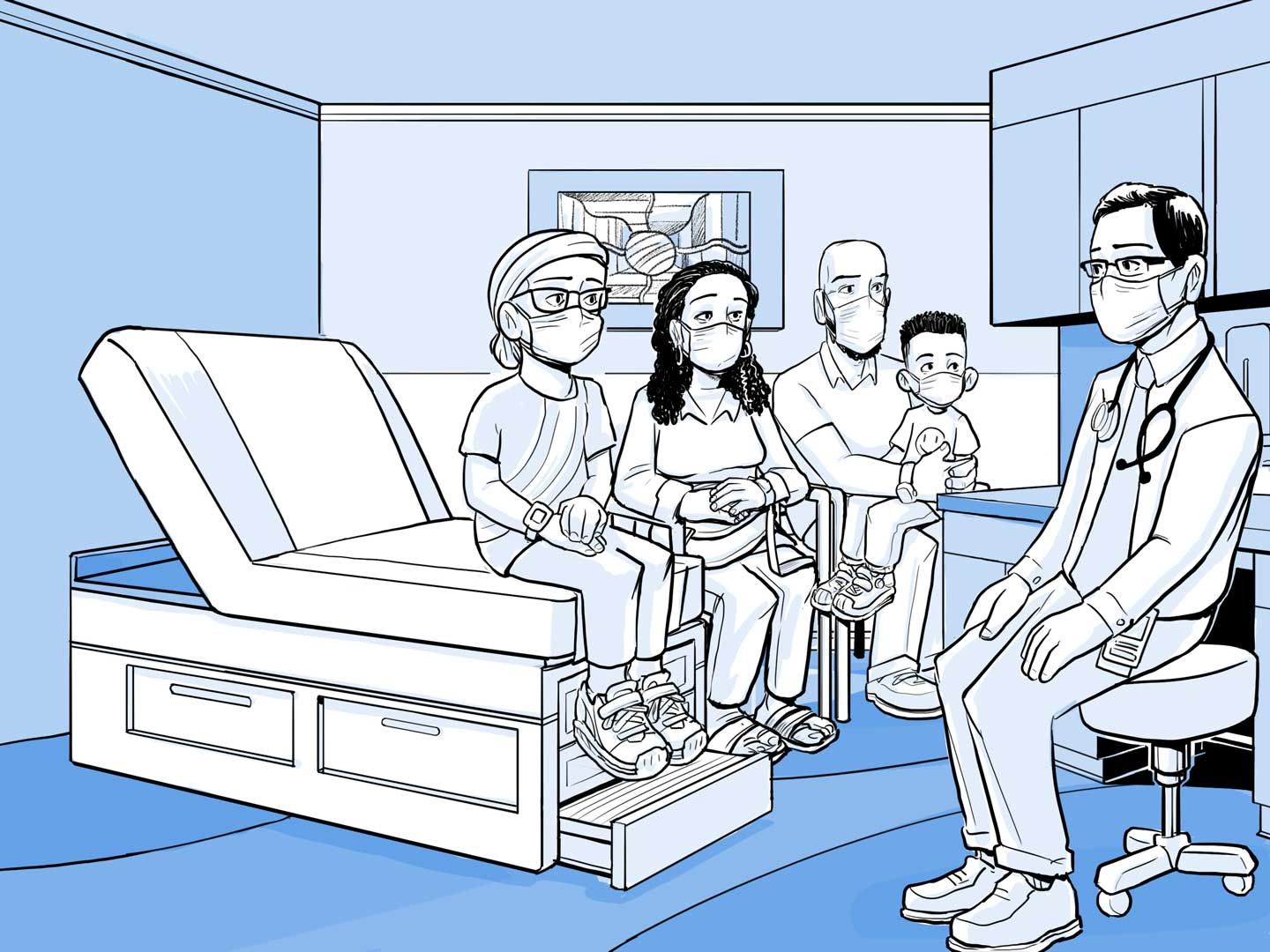In a few days
Nia is 14
In a few days
Nia is 14
This is Nia’s first follow up visit. Everyone wears a mask, because germs can make Nia very sick.
You will have many follow-up visits with your doctor.
- It is like a regular checkup. You don’t stay in the hospital.
- Your doctor checks for side effects or other problems.
- Your doctor checks if you are sick from any germs, because your body is still not ready to fight germs.
- Your doctor will give you medicines if you need it.
You will have follow up visits for at least 15 years.
- Gene therapy is very new, and your doctor wants to make sure everything is going well.
- Your doctor will explain the long-term treatment plan.
- At first, you will see your doctor about once a week. Later, you will see your doctor once every few months. After a few years, you might see your doctor only once a year.
For a few months, you can still get very sick from germs.
- Your body cannot fight germs yet.
- Your doctors will give you medicine to fight germs.
- Your doctors will tell you about other things you can do to keep germs away.
Unlike bone marrow transplant, gene therapy does not have a risk of graft versus host disease.
You will be very immunosuppressed (unable to fight germs).
- Chemotherapy kills your unchanged stem cells. This means you will not have enough white blood cells (immune system cells) for a few months.
- Your genetically-changed stem cells will start making new white blood cells, but you can still get very sick from germs for a few weeks or months after chemotherapy.
- For the first few weeks, you are at the highest risk of getting very sick from germs. In the hospital, they take extra care to keep germs away from you.
- Your doctors will also give you medicine to fight germs.
With gene therapy, you are not as immunosuppressed (unable to fight germs) as you would have been with a bone marrow transplant.
You do not need to take immunosuppressive medications to protect you from graft versus host disease after gene therapy. This is because the genetically-changed stem cells come from your own body.
